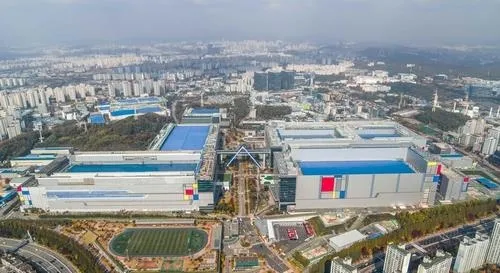Why Did Samsung’s Q2 Net Income Fall by Almost 50%?

Synopsis
Key Takeaways
- Samsung's net income dropped nearly 50% in Q2.
- The semiconductor division reported its lowest earnings in over a year.
- Chip sales increased by 11% year-on-year.
- The mobile division maintained steady performance with Galaxy S25 sales.
- Samsung anticipates recovery in the IT market driven by AI.
Seoul, July 31 (NationPress) Samsung Electronics announced on Thursday that its net income experienced a staggering drop of nearly 50 percent in the second quarter (Q2). This decline is attributed to its semiconductor division, which reported its lowest earnings in over a year due to sluggish demand for high bandwidth memory (HBM).
In a regulatory filing, the company revealed a net income of 5.11 trillion won (approximately US$3.7 billion) for the April-June timeframe, showing a 48 percent decrease from 9.84 trillion won a year prior, as reported by Yonhap news agency.
The financial results fell below market expectations, with analysts estimating a net profit of 7.29 trillion won, according to a survey conducted by Yonhap Infomax, the financial data arm of Yonhap News Agency.
Operating profit was reported at 4.67 trillion won, reflecting a 55.2 percent decline from the previous year, while revenue grew by 0.7 percent to 74.56 trillion won.
The semiconductor segment reported an operating profit of 400 billion won, the lowest since Q4 of 2023, when it faced a 2 trillion won operating loss.
Samsung Electronics attributed this poor performance in its chip division to one-time costs, including inventory value adjustments.
Despite the weak profits, chip sales rose by 11 percent year-on-year to 27.9 trillion won, fueled by demand for premium server chips and increased foundry orders.
The main memory business showed stable growth, bolstered by sales of HBM3E products and memory for data center servers.
Nevertheless, the fabless segment, or System Large Scale Integration (LSI), continued to face challenges with low profitability, while the foundry business's profits deteriorated due to inventory adjustments related to U.S. sanctions on AI chip exports to China.
Samsung's DX division, which encompasses mobile, TV, and home appliance sectors, reported a 16 percent year-on-year sales decline to 43.6 trillion won, generating 3.3 trillion won in operating profit.
The mobile unit achieved 29.2 trillion won in sales and 3.1 trillion won in operating profit, largely due to steady sales of the Galaxy S25 series smartphones launched in the first quarter.
The TV segment experienced improved sales of premium products such as Neo QLED and OLED TVs, but overall earnings fell due to weak demand and increased competition.
Looking ahead to the second half, Samsung Electronics anticipates a recovery in the global information technology sector, driven by AI and robotics, despite ongoing concerns about trade uncertainties and geopolitical risks.
The chip division aims to focus on meeting rising demand for high-value and AI-driven products, including HBM, while enhancing its competitiveness in advanced semiconductor technologies.
Additionally, it plans to boost sales of high-density and high-performance solid-state drives (SSDs) to cater to the increasing demand for chips for AI data centers.
The mobile division is projected to maintain its momentum in the upcoming months by concentrating on its newly launched foldable smartphones.
Analysts are optimistic that Samsung Electronics' earnings will rebound in the latter half of the year.









